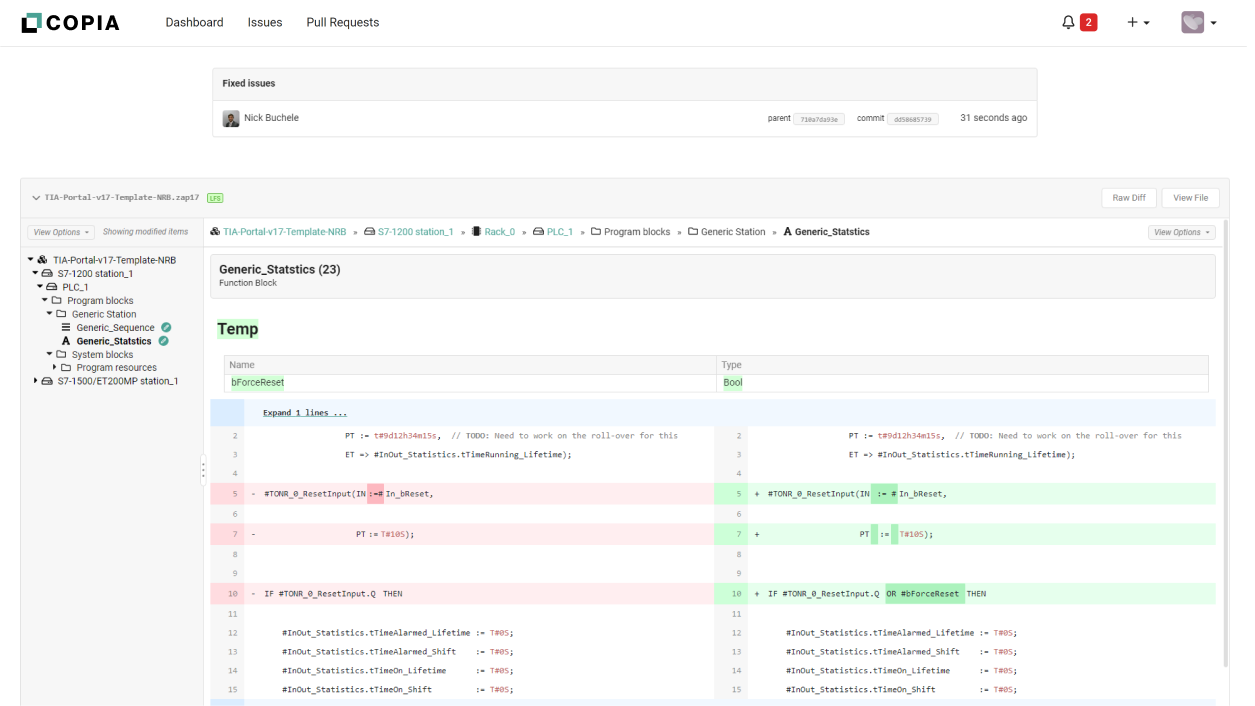
While the demand for industrial automation is at an all-time high, manufacturers continue to face challenges with the high cost of materials, increased lead times, and labor shortages. Optimistically, many manufacturers predict business growth in 2023 and plan to increase headcount and production. Therefore, the need for solutions that shorten development and production timelines, increase quality, and maximize operational uptime is imminent.
Control engineers have unfortunately been left behind in terms of their access to modern tools compared to those used in traditional software development. They have limited options in the development and management of code for PLCs and control devices, especially in multi-vendor environments where the software is limited in compatibility with its corresponding hardware.
The most common method for managing industrial automation files today is the manual process of using an archive folder, essentially performing Copy > Paste > Rename to edit and share projects. This presents a host of problems, including wasted time trying to locate files, identify the latest working version, and understand changes, risk of loss of files, or even production downtime if a machine encounters an error and the correct code to run it cannot be located.
Copia Automation delivers modern DevOps solutions to industrial automation, utilizing the proven power of Git version control for PLC programming and control devices. Git is the most widely used version control system globally and is the de facto standard for traditional software development for several reasons:
- Git is distributed, meaning files and history are stored locally and in a central repository. This characteristic enables engineers to work without network access.
- Git is fast. Since history is stored locally on your device, changing versions is nearly instant.
- Git is secure. Git uses a hashing algorithm that ensures that every edit is traceable. It is impossible to change a file or directory without Git knowing.
Until now, standard Git has not been able to be effectively applied to PLC programming because it was developed for use with text-based programming languages and not visual languages like Ladder Logic and Function Block Diagrams. Copia has solved this problem, giving engineers the power of Git version control to visualize PLC code and adopt standard, streamlined workflows.
With Git version control, projects are stored automatically and securely, users always know the latest version of code and can easily understand what changes were made, when, and by whom. Additionally, Copia enables multiple team members to work on the same project simultaneously and conflict-free, increasing collaboration and empowering organizations to ensure tight deadlines are met.
Copia delivers tremendous benefits to users of Siemens® PLCs, for those who develop the code in TIA Portal and the extended teams who need to collaborate, review, or share those files:
- Multi-User Programming: Copia inherently allows for multi-user programming, allowing your team to work collaboratively and simultaneously without needing to check a project out and back in to make changes.
- Graphical Display and Differences: currently, Copia provides visualization of code and highlighted code changes for Step7 TIA Portal v14.1 sp1 - v18, including Ladder Logic (LAD), Structured Control Language/Structured Text (SCL), and Statement List (STL), as well as in Variable lists and User-defined Data Types (UDT). More details can be found in Copia’s documentation.
- Browser and Desktop Rendering: Copia renders the code in its desktop app and web app, providing incredible freedom and acceleration of code review.
- Project Archives: create an archive that can be parsed by and rendered directly in Copia, giving you full access to the power of Git-based source control.
- Version Control Interface: for those utilizing TIA Portal’s Version Control Interface (VCI), Copia can work with existing repositories and help create and manage new repositories and workspaces
- Merge Tool: in the event of a conflict with multiple engineers working on the same project, Copia provides the ability to review and choose which version belongs in the final version of code for each individual conflict.
- Auto-Archive: project folders and global libraries can be stored in the repository, automatically archiving the project.

The time to adopt modern tools in the manufacturing industry is long overdue. Now, with the opportunistic state of the economy and increased demand, implementing Copia’s Git version control is a simple and cost-effective way to give companies the power to maximize productivity, increase quality, and shorten project timelines. Learn more and sign up for the free trial at www.copia.io.